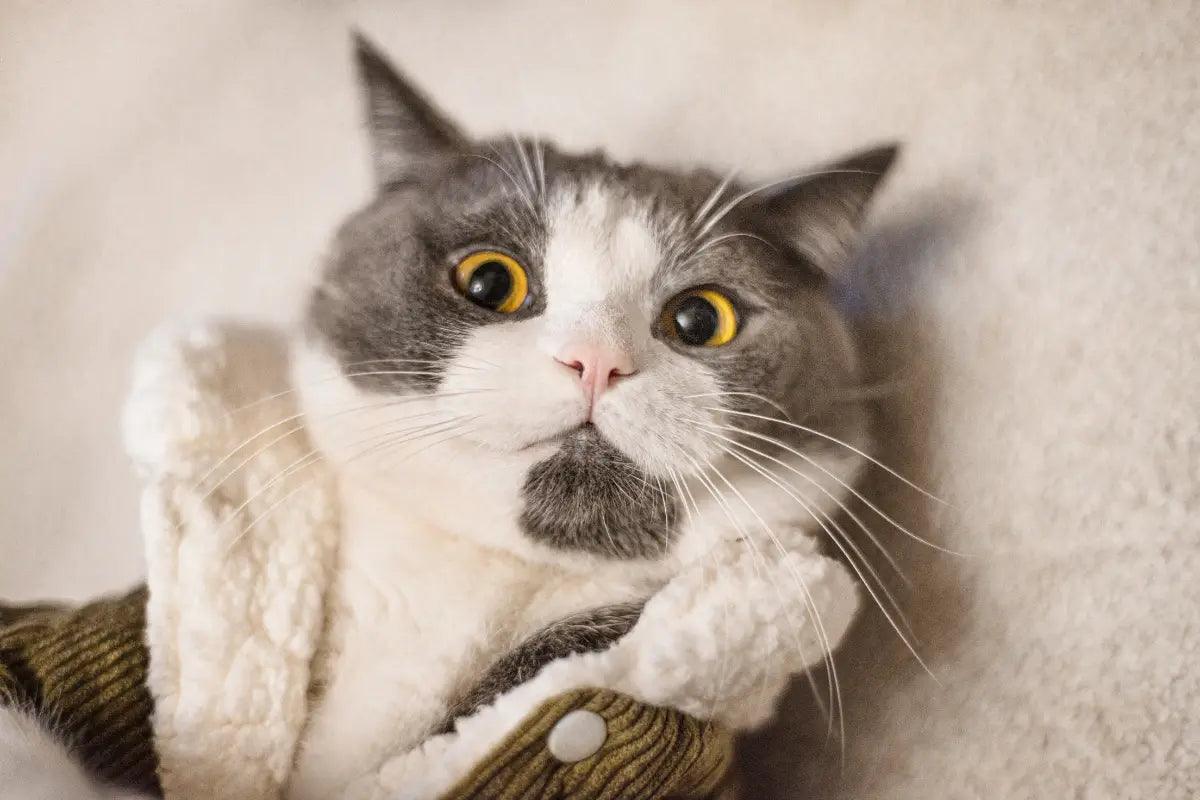Cats are distinct from small dogs. Their nutritional needs, training methods, and body language all differ. Feline communication is often more challenging to understand than dog communication because cats' nonverbal cues can be very subtle and easily missed or misunderstood. Misinterpreting a cat's signals can lead to being on the receiving end of their sharp claws and teeth.
Understanding subtle feline body language helps us avoid problems and build a stronger connection. Cats communicate with each other and humans using their body, tail, and facial expressions. Every blink, twitch, and movement conveys a message. Feline body language can be subtle, confusing, and sometimes contradictory. Because cats can't communicate verbally, we need to learn to understand their body language, consider the context of the situation, and recognize each cat's individual quirks.
A cat's eyes are one of the most expressive parts of its body. Let's interpret the feelings concealed in the soul's windows, the eyes.

Mesmer-eyes
Regardless of whether they are blue, green, or gold, or round, oval, or almond-shaped, your cat's eyes express feelings through changes in pupil size and eyelid position. A cat's pupils can contract to narrow slits or expand into black pools. Eyelids can be fully open, partially closed, or squinted.
The reasons for these changes may be emotional, such as fear, aggression, pleasure, or excitement, or environmental, such as fluctuations in light levels. It's like watching a silent film: the autonomic nervous system is the director, the pupil is the main character, the eyelid is a supporting actor, and the rest of the face, body, and tail comprise the rest of the cast. The environment around the cat sets the stage.
Eyes Wide Open
When paying attention, fully open eyes indicate trust. When being friendly, pupils are of regular size. The eyes may appear slightly narrowed, eyebrows relaxed, and the cat might show affection by rubbing its cheek. Consider this an indication of love and trust.
Unblinking Stare
When a cat becomes interested, its eyes focus on the object, person, or animal with a steady gaze and slightly dilated pupils. This communicates, "I see you and don't want any trouble." However, the unblinking stare also serves as a warning to potential adversaries among cats. This is an important way for cats to communicate in households with limited resources such as food, water, litter boxes, toys, and territory. People often miss these subtle cues.
Direct Stare
In cats, a direct gaze is seen as threatening and aggressive. If a cat feels extremely aggressive, its pupils may be slitted or dilated. Half-closed eyelids can shield the eyes from potential harm. When a cat is defensively aggressive, it will have dilated pupils and a furrowed brow. It's best to avoid interacting with this cat. If you are unfamiliar with a cat, avoiding the risk of injury by not initiating direct eye contact is safest.
Pain
Cats maintain a stoic expression when experiencing pain, but their eyes can reveal discomfort in their body or eyes. When a cat is in physical pain, its pupils become dilated. If a cat suffers from eye pain, its pupils may be dilated or constricted, depending on the injury or underlying illness. Squinting also suggests pain in the body or eye. Additionally, bloodshot eyes may be a sign of discomfort.
Slow Eye Blinks
Sweet, affectionate kitty kisses - slow eye blinks are a sign of love and trust. The eyes appear sleepy and dreamy with partially closed lids, indicating a state of bliss for cats. If a cat gives you a slow blink, show your affection in return with a slow blink to share the love.
Narrowed Slits
If you've ever seen a cat lounging in the sunlight, you've likely observed how their pupils can narrow. However, it's not always pleasant when you spot your cat with constricted pupils in a dim environment. If a cat's pupils narrow when not in a well-lit space, they are typically upset or poised to attack. You may also notice that their eyes appear squinted or nearly closed.
When a cat's eyelids squint and their pupils are contracted simultaneously, it's usually a clear warning sign. A swiftly contracting pupil indicates that the cat may focus on (and prepare to attack) something they see as prey.
Additional indications of an aggressive stance before a confrontation include:
- Erect Ears, pointed backwards, or flattened against the head
- Intense, direct gaze
- Growling, yowling, hissing, and spitting
- Ruffled fur and raised hackles
- A twitching, thumping, thrashing, or very rigid tail
- Crouching or a rigid and tense body
- Bared teeth
Eyes Can Be Windows to Health Issues

Observe your cat's eyes for indications of potential health issues. If your cat is squinting, especially in one eye, or there is excessive watering or discharge, it's important to schedule a vet visit.
Cats are adept at concealing pain and illnesses as a survival mechanism. However, their eyes can provide insight into their well-being and emotional state.
The level of light influences the size of a cat's pupil and can indicate the cat's health. Irregularly sized pupils or pupils that do not respond to light may signify a medical condition, warranting an immediate trip to the vet.





















